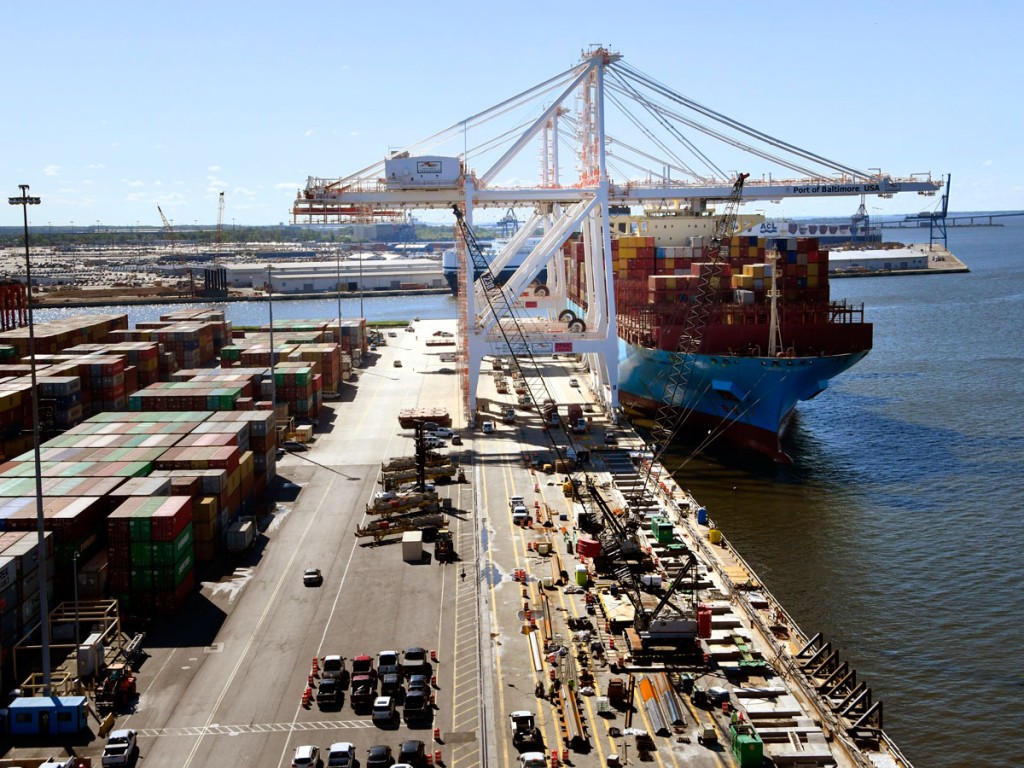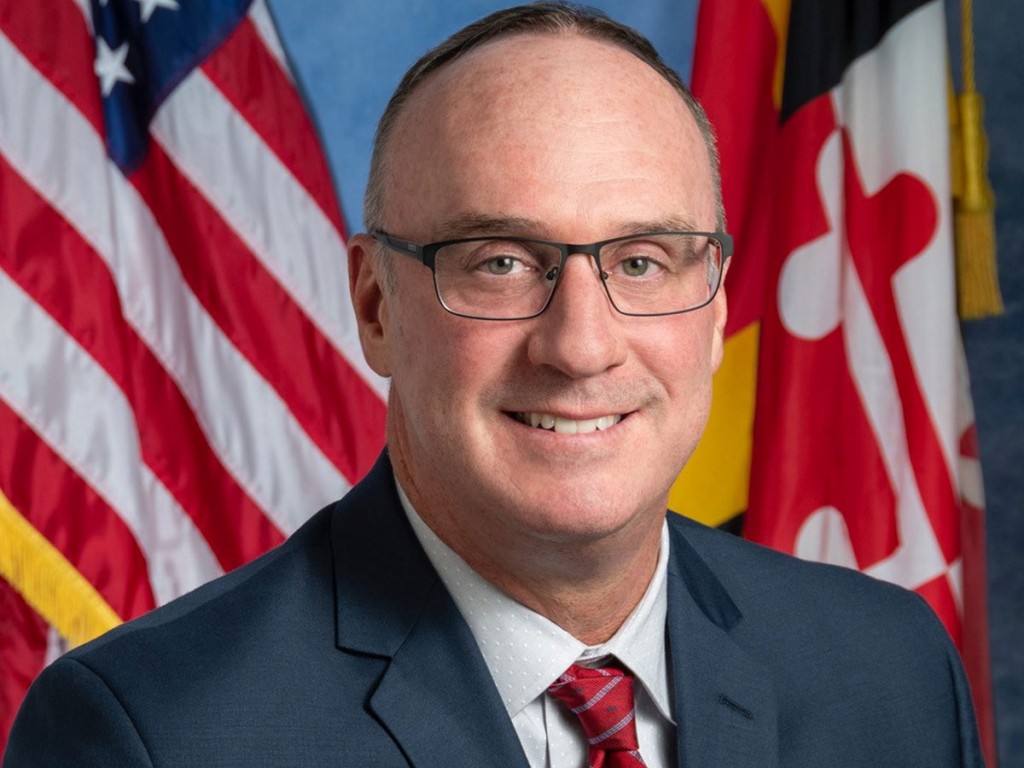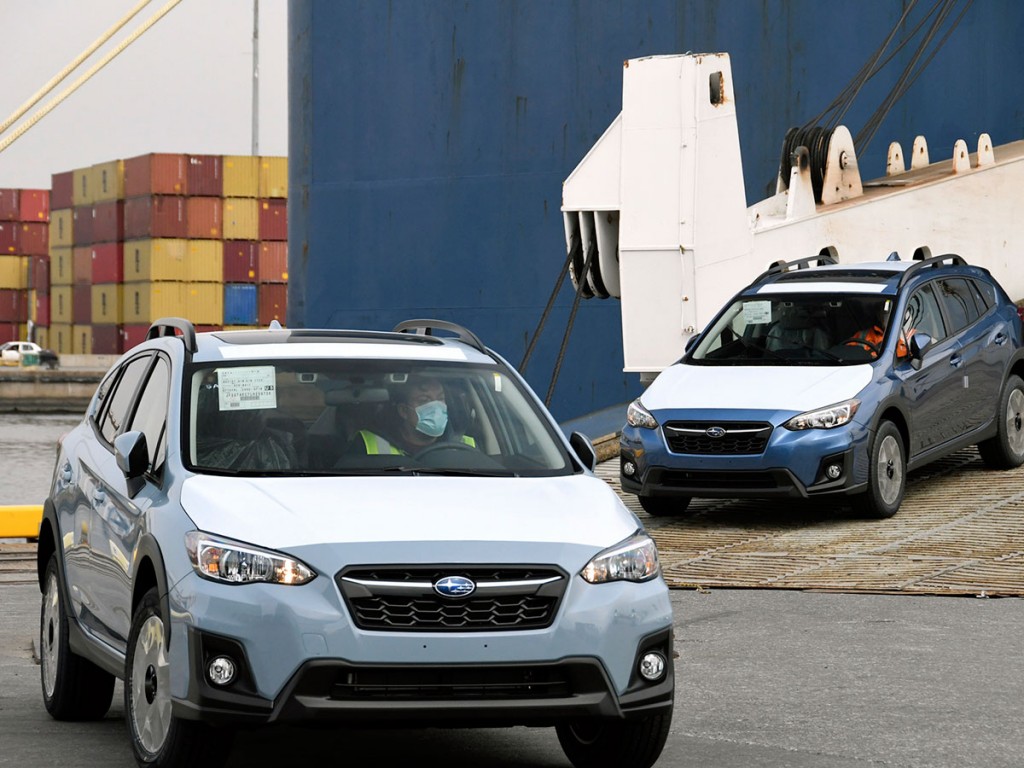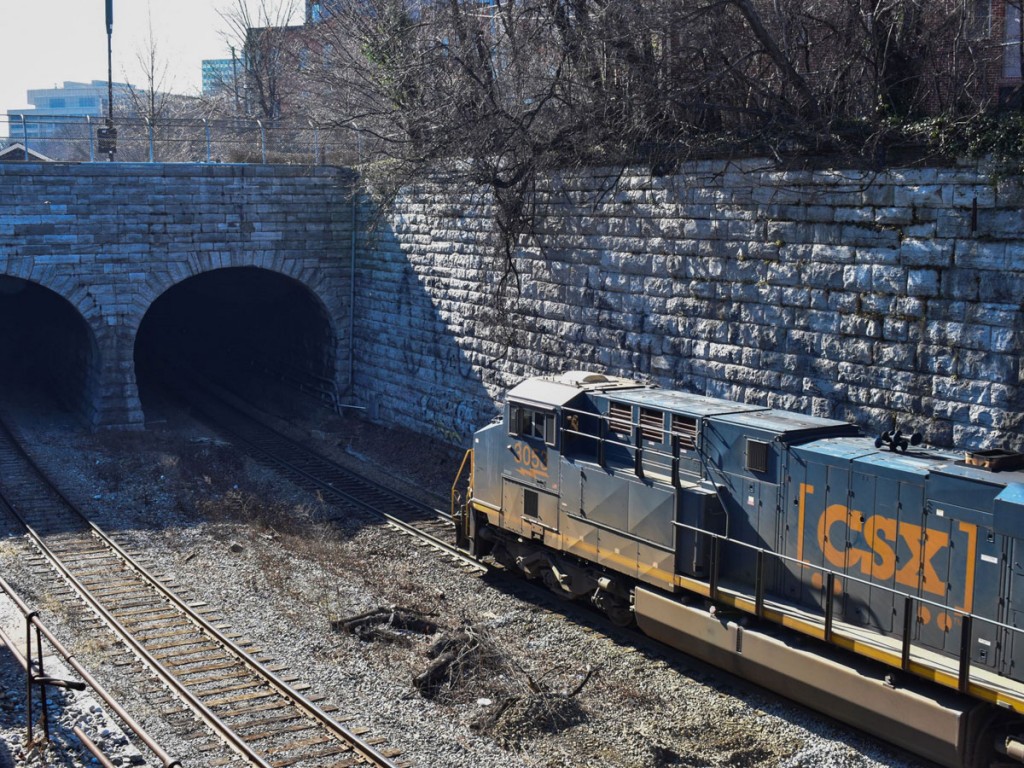
With its second 50-foot-deep container berth nearing completion and the long-awaited Howard Street Tunnel project advancing, the Port of Baltimore is moving ahead to offer further benefits from its propitious location.
When the second 50-foot-deep berth at Baltimore’s Seagirt Marine Terminal becomes operational later this year, the port will be able to simultaneously accommodate two megacontainerships, according to Doyle, who cited the MPA’s mutually beneficial relationship with terminal operator Ports America Chesapeake.
“It’s a great partnership we have with Ports America, and Seagirt is going to become much more efficient and a better terminal overall,” said Doyle, who in July 2020 assumed the MPA helm from longtime leader James J. White.

The berth endeavor is the cornerstone of a $122.1 million investment at Seagirt, with Ports America Chesapeake contributing $105 million, $10.5 million coming from the State of Maryland and $6.6 million in federal funding. And the Ports America unit is investing an additional $61 million into Seagirt for more equipment, infrastructure enhancements and technology upgrades.
In April, Annapolis Junction, Maryland-based Corman Kokosing completed dredging on the new deepwater berth at Seagirt, and four neo-Panamax ship-to-shore cranes are slated to arrive this summer.
Another major quay project at the Port of Baltimore is fortifying roll-on/roll-off berths at the Dundalk Marine Terminal, the nation’s leading facility for handling vehicles and heavy farm and construction equipment.
“Ro/ro machinery, especially on the agriculture side, is getting larger and heavier, and this project is making a strong statement that we will continue to be able to handle that cargo,” said Doyle, who cited Dundalk’s direct-to-rail capabilities and the presence of four on-site auto processors. “We’ve got all the major ro/ro ocean carriers calling on Baltimore, and we’re looking forward to growing that business for our customers.”

Off the port, beneath downtown Baltimore, the century-and-a-quarter-old Howard Street Tunnel appears poised for reconstruction to allow rail transit of double-stacked containers. The project, engaging the public sector with Class I rail firm CSX, includes providing 18 additional inches of clearance in the tunnel itself, as well as vertical clearance improvements at 22 other locations between Baltimore and Philadelphia.
“This is another huge project that will not only impact the Port of Baltimore, but the entire rail network on the East Coast,” said Doyle, who estimated that its completion will add approximately 160,000 containers to the Port of Baltimore’s annual throughput. “It will fix a longtime hurdle for the Port of Baltimore – the lack of double-stack rail – and it will give the entire East Coast seamless double-stack rail capabilities from Maine to Florida.”
With the public comment period completed in April, final National Environmental Policy Act approval is now awaited so that construction can begin.
The tunnel project will generate about 6,550 construction jobs plus an additional 7,300 jobs thanks to increased business, according to Doyle, who noted environmental benefits as well. Over the first 30 years of operation of the reconstructed tunnel, more than 2.5 million containers are anticipated to be converted from trucking to rail, avoiding 1.2 billion truck miles traveled and reducing fuel consumption by 137 million gallons.

Of course, Doyle’s arrival at the MPA came at a particularly challenging time – in the midst of the COVID-19 pandemic – but Doyle, who served as a Federal Maritime Commission commissioner from 2013 to 2018 and was chief executive officer and executive director of the not-for-profit Dredging Contractors of America immediately prior to joining the port, has been up to the test.
Although limited in ability to meet on a face-to-face basis, Doyle has been closely and candidly engaged with the full spectrum of stakeholders, from labor, trucking and terminal operators to tug operators and Maryland Pilots to the U.S. Coast Guard and U.S. Customs and Border Protection. He said he has been impressed with a shared dedication to health and safety.
Moreover, cargo volumes at the Port of Baltimore have been solidly recovering from pandemic lows while Baltimore has boosted its status as an e-commerce logistics hub, with Doyle proclaiming, “During the pandemic, Baltimore became the e-commerce port of the U.S.”
Doyle pointed to the proliferation of distribution, fulfillment and sorting centers in the area, including four Amazon fulfillment facilities, as well as Tradepoint Atlantic’s successful transformation of the historic Sparrows Point shipyard property into an economic driver with facilities of such firms as Under Armour, The Home Depot, Floor & Décor and Volkswagen. And Wayfair has just leased 1.2 million square feet of space in nearby Aberdeen, Maryland.
“Baltimore has some great built-in advantages, such as being located right off Interstate 95, the main street of the U.S. East Coast, and it’s also the closest inland seaport to the Midwest,” Doyle said. “Cargo coming to or leaving from the Port of Baltimore can get to or from the Heartland faster than other East Coast ports.
“We also have unique quality programs for our key commodities, where we meet monthly with all members of the supply chains to go over past performance and figure out how we can do better,” he said. “Baltimore is coming back strong, and there’s a lot of excitement in the industry about what we’re doing.”




